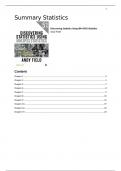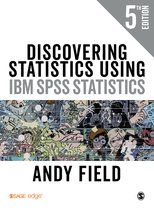Summary
Summary Discovering Statistics Using IBM SPSS - Statistics (MAN-MOR004)
- Course
- Institution
- Book
This summary contains everything you need to know for the course Statistics at Radboud. Note: During my premaster, I also had the course 'Kwantitatieve Onderzoeksmethodologie', for which I also had to study Field. Therefore, I also offer a package containing both summaries, which includes other ...
[Show more]




